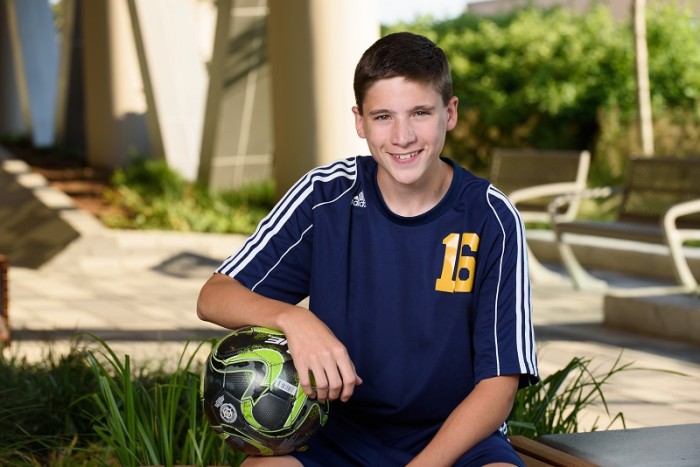
Youth sports provide tremendous social, emotional and physical benefits for children throughout their lifetime; they also come with the risk of sports-related injuries. Children’s bodies are still developing which puts them at an increased risk of musculoskeletal injuries. The most common injuries seen in children include traumatic injuries (sprains, strains, tears, fractures, dislocations, etc.) and overuse injuries (injuries that get progressively worse from a repeated movement and can worsen over time if not treated). There are several things that can help prevent and treat these types of injuries. Below is an overview from sports injury core group physical therapist Jenna Saunders.

Sports injury prevention
The American Academy of Pediatrics has some important injury prevention tips that can help parents promote a safe and optimal sports experience for their child and teammates. If your child participates in youth sports or physical activities like dance, be sure they follow these recommendations when they practice, play or perform:
- Wear the right gear. Athletes should wear appropriate and properly fitting protective equipment based on the sport they play. (Note: Players should not assume the protective gear will prevent all injuries, especially during more dangerous activities.)
- Strengthen the muscles used in play. Practice and conditioning drills will increase the strength of the muscles needed to perform a sport.
- Increase flexibility. Warming up and dynamic sport-specific stretching before play and static stretching after play can increase an athlete’s flexibility. Dynamic stretching uses sports-specific, controlled leg movements to loosen up muscles and prepare the body for play. Static stretching increases flexibility by placing a muscle into a lengthened position for a longer period of time (30-60 seconds) to make a lasting change.
- Use the proper technique. Coaches and parents should reinforce proper technique during play.
- Take breaks during play. Periodic rest periods and drinking plenty of fluids before and during practice and games helps reduce injury and heat illness.
- Play safe. The specific rules of each sport are designed to limit injuries and should be followed by athletes (and enforced by coaches and parents).
- Play a variety of sports. Children should play multiple sports until age 12 and two to three sports between the ages of 13 to 15. Specialization, if desired, is not recommended until age 16.
- Take time off. Children should take a day or two off from sports participation each week to allow their bodies to recover. Children should take two to three months off from a particular sport each year.
- Cross-train. Engaging in various exercises for well-rounded muscular
development can help prevent loss of skill or conditioning. - Stop the activity if there is pain. Determine if the pain resolves with rest or persists. If pain or other symptoms worsen or do not resolve, it is best to check with a health care provider.
What to do when an injury occurs
When injuries do occur it is important to seek proper medical attention from a health care provider who has experience and understands the demanding nature of the sports on a child’s body. If someone notices a change in an athlete’s movements, such as running with a limp or favoring one side of their body, they should pull the athlete out of play or out of a performance. Seeking early and thorough assessment from a health care provider may prevent further injury and pain.
When to see a doctor
Seek professional help for these sports injury warning signs:
- Consistent pain
- Persistent swelling
- Recurrent instability of a joint
- Painful joint “pops” or locking
- Prolonged loss of movement or strength
- Inability to tolerate any weight on the limb
- Numbness or tingling
.jpg)
When and how to treat at home
If your child does not have any of the severe symptoms listed above, but is experiencing pain after play, below are some treatment options to try at home. Using this “RICE” method can help relieve pain, reduce inflammation, promote movement and speed healing. During the first 48 hours after an injury it is best to provide:
- Rest: Have the child stop or take a break from the activity that causes pain.
- Ice: Apply ice to the affected area for 10-20 minutes every four hours as needed. Use a towel around the ice pack to avoid skin irritation.
- Compression: If swelling persists, wrapping the injured area with a bandage can help minimize the swelling.
- Elevation: Elevating the injured limb can increase circulation and decrease the swelling.
Again, if pain or other symptoms worsen or do not resolve, it is best to check with a health care provider.
Rehabilitation and recovery
Rest is important but getting moving as pain subsides will get your athlete back on the field faster. Gradually increase weight bearing, movement and strengthening until your athlete is back at his or her prior level. If your child’s pain persists, working with a pediatric physical or occupational therapist to create a rehabilitation plan to help them get moving again can help.
Getting back in the game and preventing injuries
Sports physicals help determine if a child is healthy enough to participate in a particular activity and are tailored to increase the safety of sports participation.
In the event that an injury does occur, our staff provides individualized therapy evaluations and treatment plans. Our therapists use techniques designed to improve stability, flexibility and strength to correct imbalances that might contribute to other injuries and to maximize continued athletic improvement. A complete course of rehabilitation at CHoR not only allows a child to play again without pain, but may also make another injury less likely.
